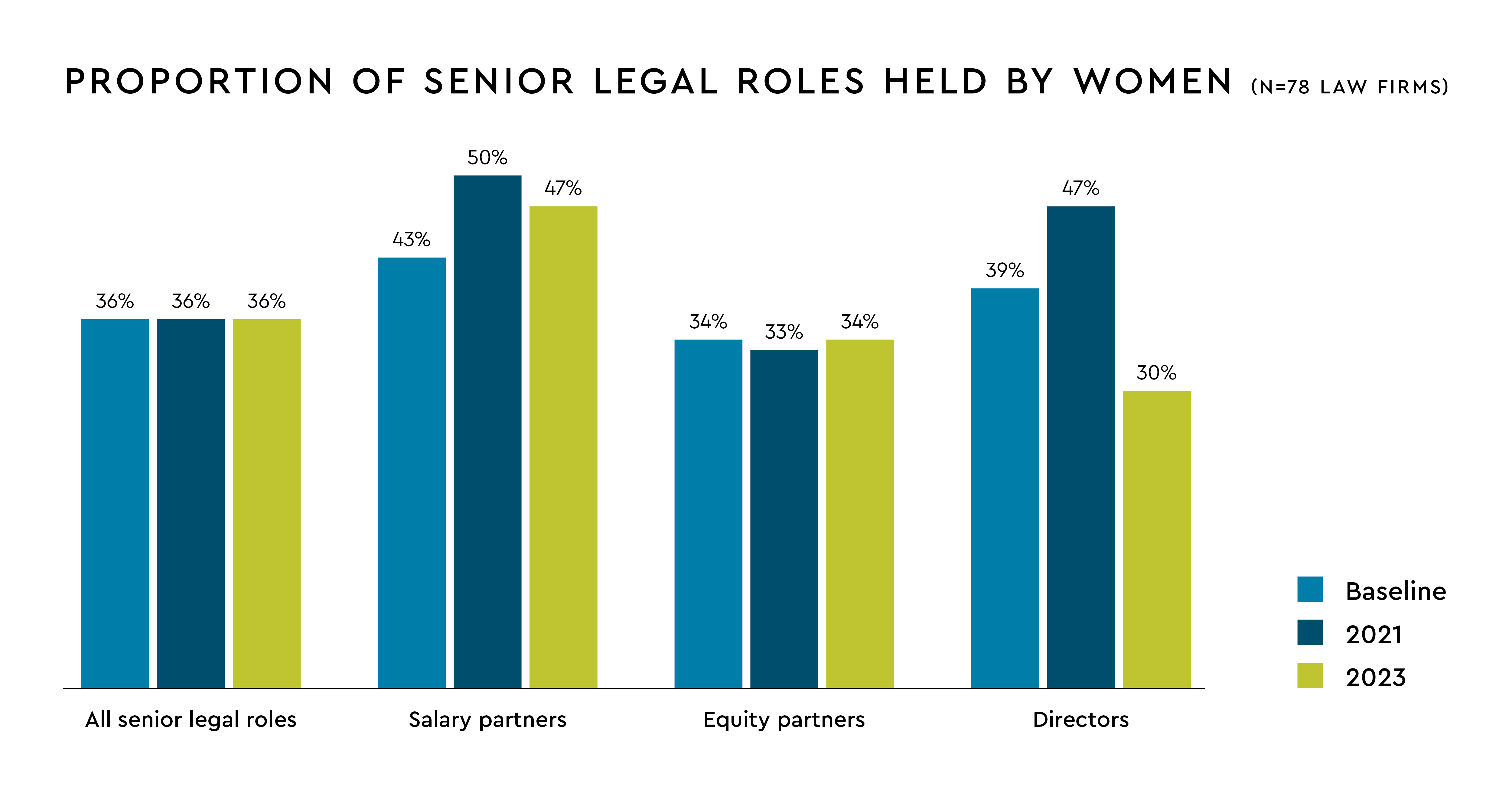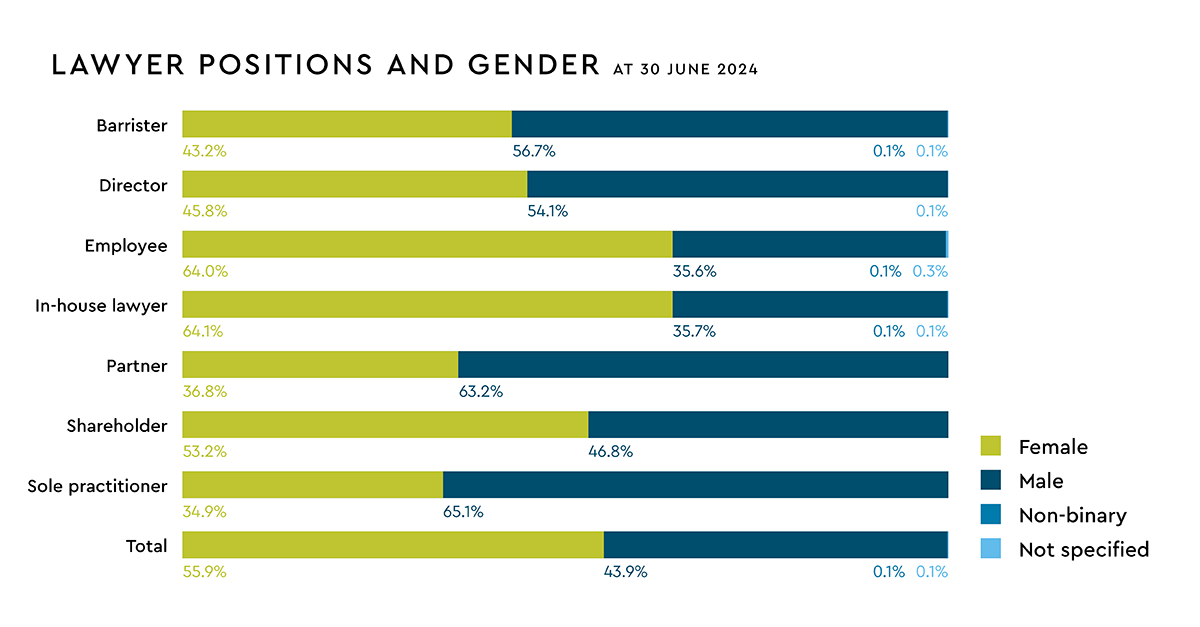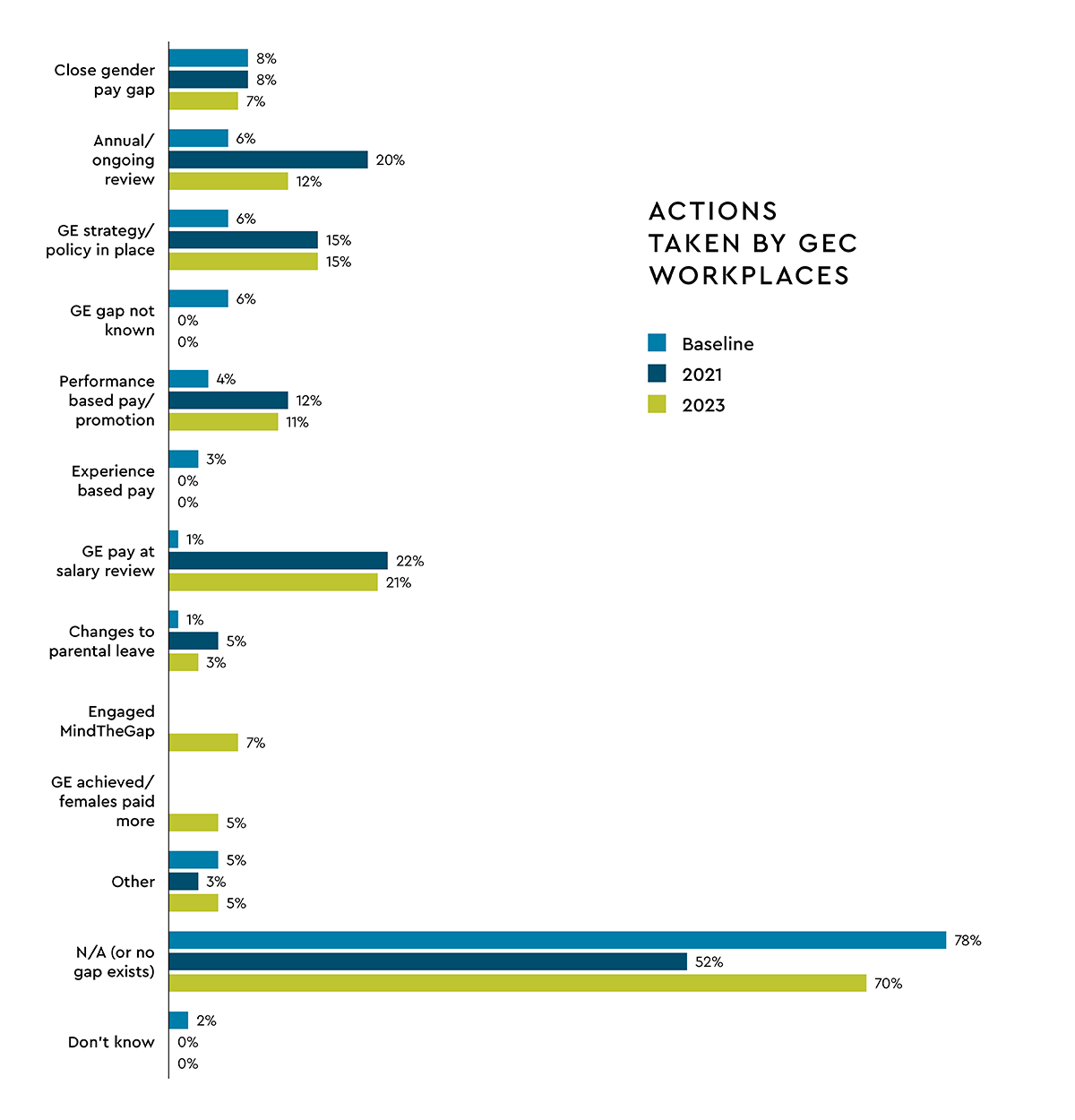Gender Equality Charter Survey shows progress
The New Zealand Law Society Te Kāhui Ture o Aotearoa 2023 Gender Equality Charter (GEC) survey results show that progress is being made in several key areas but there is more work to do.
Beware of an increase in scam attempts by phone and email targeting lawyers. Read our guidance about email scams and how to recognise them.

Started in 2018, the Gender Equality Charter is a set of commitments made by legal workplaces aimed at improving the retention and advancement of women lawyers. Organisations that become Charter signatories agree to follow a set of ongoing commitments and report to the Law Society every two years (by way of a survey) on what they are doing to meet those commitments. There are currently 143 active Charter signatories.1
Law Society Chief Executive, Katie Rusbatch says “Gender equality across the profession is essential to establishing and maintaining a fair, just and equitable legal system that reflects the population it serves.” Law Society data shows year on year growth of women lawyers entering the profession,2 but there is still a large gap when it comes to gender equality in the higher ranks of the profession.
“In the wider New Zealand population 50.42 per cent are women,3 and the legal profession is already doing well with women comprising 55.4 per cent of the profession. The 2023 survey shows that there is a marked difference at senior levels though, where the ratio of women remains at 36 per cent.”
In the 2023 survey only 34 per cent of equity partner positions were held by women, 47 per cent of salary partners were women, and 30 per cent of directors. One in five GEC workplaces report that they have achieved gender equality (number of women equal to or greater than the number of men) in senior roles, with another 14 per cent indicating that the ratio of women in those roles has increased at their organisations.

This gap at senior levels is also reflected in data for the wider profession, including non-GEC workplaces.

“It’s important that legal workplaces take intentional action to address gender equality issues, including showing their public commitment to gender equality by becoming GEC signatories. Long-term commitment to support equality is necessary” Ms Rusbatch said.
The delivery of unconscious bias training had enjoyed a significant increase from the 2018 baseline figure of 29 per cent to 64 per cent in 2021. It has declined to 54 per cent in the 2023 survey. 50 per cent of GEC respondents commented that they had scheduled training for a later, post-survey date.
Gender pay audits among GEC workplaces and GEC law firms remain steady against the 2021 figure at 62 per cent and 72 per cent, respectively. This is a significant increase above the 35 per cent and 39 per cent 2018 baseline figures.
Of the GEC workplaces 70 per cent reported that there was either no gender pay gap in their organisation or the question was not applicable. This compares favourably with 2021, when that percentage was 52 per cent.

There has been a twofold increase since 2021 in organisations reporting that they are reviewing key policies from a gender equality perspective. This included promotion (26 per cent), recruitment (11 per cent) and parental leave (10 per cent).
The percentage of gender pay audits in 2023 remains at a similar level as 2021 with 62 per cent of all GEC workplaces and 72 per cent of GEC law firms indicating that they have conducted a pay audit, significantly above the 35 per cent and 39 per cent, respectively, in the 2018 baseline.
Flexible work arrangements have increased across the profession since the 2018 baseline survey. Working remotely is the most common flexible working arrangement, with GEC workplaces reporting that 39 per cent of men and 29 per cent of women lawyers utilised it. Working a different number of hours was used much more often by women lawyers (30 per cent) than by men (13 per cent).
A new question in the 2023 survey asked GEC workplaces whether they had adopted the voluntary target of women lawyers receiving at least 50 per cent of external instructions for significant legal matters. This voluntary target was introduced in 2022.
Of the GEC signatories, 21 per cent have adopted the voluntary target. Of the 15 GEC organisations that adopted the target, their average percentage of external instructions that were assigned to women was 62 per cent.
Survey respondents were also asked to provide thoughts on what the Law Society could do to best improve all aspects of diversity, equality and inclusion in the legal profession. The most common suggestions were providing leadership, policy and solutions (31 per cent), training and mentoring opportunities (28 per cent), and case studies and best practice examples (19 per cent).
Ms Rusbatch says that making a commitment will help ensure that today’s cohort of new lawyers are the senior leaders of tomorrow. “It’s encouraging to see positive movement in some areas; however, clearly there is some way to go. Women make up 55.4 per cent of the profession, and over time we’d expect this to flow through into the senior roles. We encourage all legal workplaces to become signatories to the Gender Equality Charter and to commit to gender equality in their workplace.”
Instructions for becoming signatories to the GEC can be found on the Law Society website.
Read the summary of results and view the full report.
1. Stats NZ Tatauranga Aotearoa 30 September 2023
2. Law Society Snapshot of the Profession December 2023
3. Stats NZ Tatauranga Aotearoa 30 September 2023